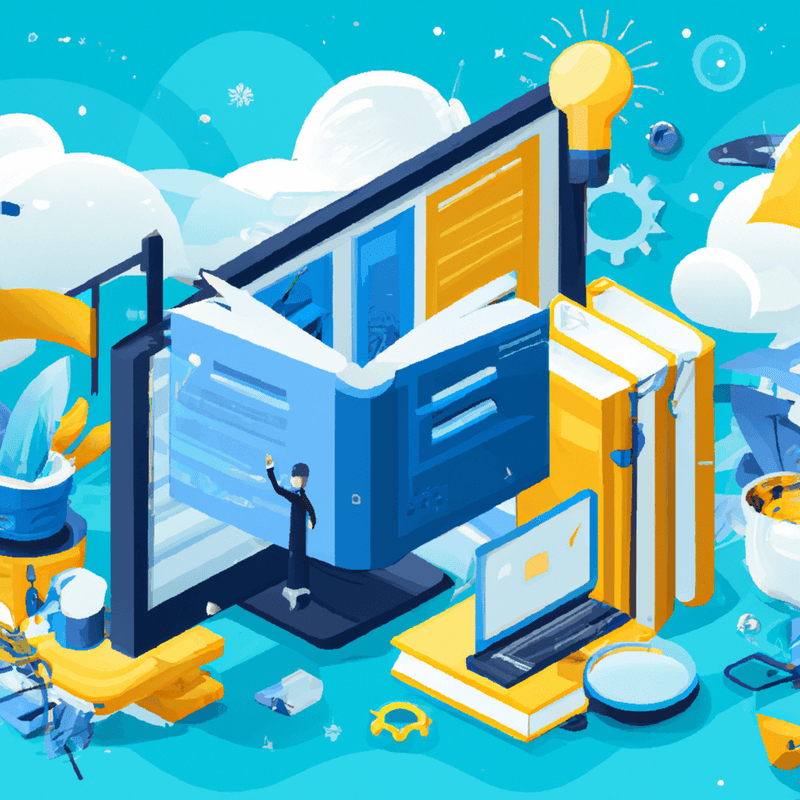Understanding the Basics of Software Development
Software development is a fascinating and complex field that serves as the backbone of our digital world. It's the process of conceiving, designing, programming, documenting, testing, and fixing bugs involved in creating and maintaining applications, frameworks, or other software components. In simpler terms, it's the act of creating a software application that can perform a specific task or a set of tasks. This process is carried out by software developers, who use programming languages like Python, Java, and C++ to write the code that makes up the software. In this blog, we will explore the basic concepts and principles of software development.

Key Concepts in Software Development
Software development is a multifaceted process that involves various key concepts. Firstly, it's crucial to understand that software development is a cycle, often referred to as the Software Development Life Cycle (SDLC). This cycle consists of several stages, including planning, designing, coding, testing, and maintenance. Another key concept is coding, which is the process of writing instructions for computers using programming languages. Furthermore, testing is an essential phase where developers check the software for bugs or errors. Lastly, software maintenance is the continuous process of updating and improving the software after it's released. By understanding these key concepts, you can gain a better grasp of the basics of software development.
Overview of Different Software Development Models
In this section, we'll explore various software development models that guide how software is planned, designed, and built. These models, also known as 'Software Development Life Cycle (SDLC) models', include the Waterfall model, Agile model, Iterative model, and Spiral model. Each model has its unique approach. For instance, the Waterfall model follows a linear sequential flow, allowing for easy understanding and management. On the other hand, the Agile model is more flexible and promotes continuous iteration of development and testing in the software development process. Understanding these models can help you choose the most effective approach for your software project.
Understanding the Software Development Life Cycle (SDLC)
The Software Development Life Cycle, commonly known as SDLC, is a fundamental concept you need to grasp when learning about software development. Essentially, it's a framework or process that outlines the steps involved in creating and maintaining software. It starts with the initial stage of planning and requirement analysis, then moves into design and coding, followed by testing, deployment, and finally maintenance. Understanding the SDLC allows developers to organize their tasks efficiently, thereby ensuring they create high-quality software that meets client needs and stays within budget.
Essential Roles in a Software Development Team
In a typical software development process, several key roles contribute to the successful creation and deployment of software. The Product Owner sets the vision, outlining the what and why of the project. The Project Manager plans, procures resources, and monitors progress to ensure timely delivery. Software Developers write the actual code, turning the vision into a functional product. Quality Assurance Engineers test the software for bugs, ensuring its reliability and usability. Finally, the DevOps Engineer oversees the software's deployment, ensuring seamless integration and continuous delivery. Each role is crucial, and their effective collaboration ensures the production of high-quality software.
Basic Tools and Languages in Software Development
In the realm of software development, certain tools and languages are fundamental to creating functional and efficient applications. The most commonly used languages include JavaScript, Python, and Java, each with its own unique benefits and suited to different types of projects. Tools like Integrated Development Environments (IDEs), such as Visual Studio Code or PyCharm, are crucial for writing and debugging code. Version control systems like Git help maintain different versions of the software and allow multiple developers to collaborate. Understanding these basic tools and languages is the first step in mastering software development.
The Process of Coding in Software Development
In the realm of software development, coding is a fundamental process. It involves writing instructions for computers to execute in a language they understand. Think of it as a recipe for your favorite dish, where each step instructs the computer on what to do. Coding is done using programming languages like Python, Java, or C++, which the computer then translates into machine language. This process of coding forms the backbone of software development, enabling us to create applications, websites, and even complex systems. Remember, coding is more than just writing lines of code; it's about solving problems and bringing ideas to life.
Software Testing and Debugging Explained
Software testing and debugging are two essential parts of the software development process. Software testing is a method where a program or application is run to identify any bugs or errors. It checks if the software is working as expected and meeting all the requirements. On the other hand, debugging is the process of finding and resolving those detected bugs or errors. Debugging ensures that the software is error-free and performs optimally. Without these two, any software development process is incomplete as they ensure the delivery of a quality product.
The Importance of Maintenance in Software Development
In software development, maintenance holds a pivotal role. It's not just about crafting a program or app and then moving to the next project. Software requires continuous monitoring, updating, and fixing to ensure it performs efficiently. Maintenance helps in correcting errors, enhancing software performance, and adapting to the ever-changing environment. If you neglect this crucial step, your software might become obsolete, leading to a poor user experience. Hence, prioritizing maintenance in software development is key to long-term success.
Conclusion: The Impact of Software Development on Daily Life
In conclusion, software development has a profound impact on our everyday lives. It's the driving force behind the seamless functioning of apps on our smartphones, computers, and other digital devices. From enabling us to connect with people around the world through social media to assisting us in managing our finances, software development plays a pivotal role. It enhances our productivity at work with tools like word processors, spreadsheet programs, and presentation software. Even in our homes, software development makes smart devices and appliances more efficient and user-friendly. It's clear that the influence of software development is ever-present, continually shaping and improving the way we live and work.

